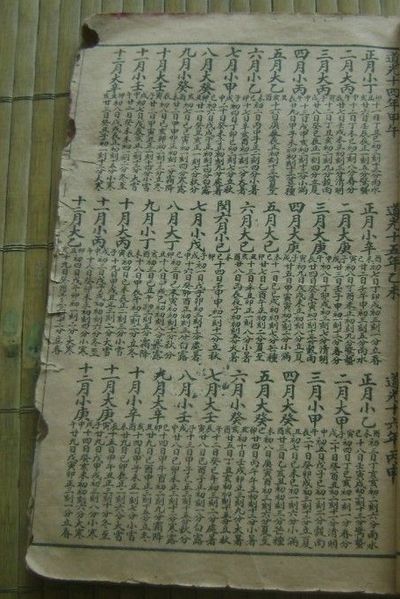The Thai lunar calendar, or Tai calendar, is a lunisolar Buddhist calendar. It is used for calculating lunar-regulated holy days. Based on the SuriyaYatra, with likely influence from the traditional Hindu Surya Siddhanta, it has its own unique structure that does not require the Surya Siddhanta to calculate. Lunisolar calendars combine lunar and solar calendars for a nominal year of 12 months. An extra day or an extra 30-day month is intercalated at irregular intervals.
Fortune-Telling Manual (Phrommachat) with the twelve animals of the Thai zodiac and their associated attributes, avatars and plants. Thailand, c. 1845. Chester Beatty Library
August 1 and 2, 2004. Sunday, a holiday, on the left, and Monday, observed as the compensatory day, on the right
Image: July 14 2007
Image: July 15 2007
A lunisolar calendar is a calendar in many cultures, incorporating lunar calendars and solar calendars. The date of lunisolar calendars therefore indicates both the Moon phase and the time of the solar year, that is the position of the Sun in the Earth's sky. If the sidereal year is used instead of the solar year, then the calendar will predict the constellation near which the full moon may occur. As with all calendars which divide the year into months there is an additional requirement that the year have a whole number of months. In some case ordinary years consist of twelve months but every second or third year is an embolismic year, which adds a thirteenth intercalary, embolismic, or leap month.
Record of the Chinese lunisolar calendar for 1834, 1835, and 1836 during the Qing dynasty under the Daoguang Emperor's Reign (道光十四年,道光十五年,道光十六年)
1729 Japanese calendar, which used the Jōkyō calendar procedure, published by Ise Grand Shrine






